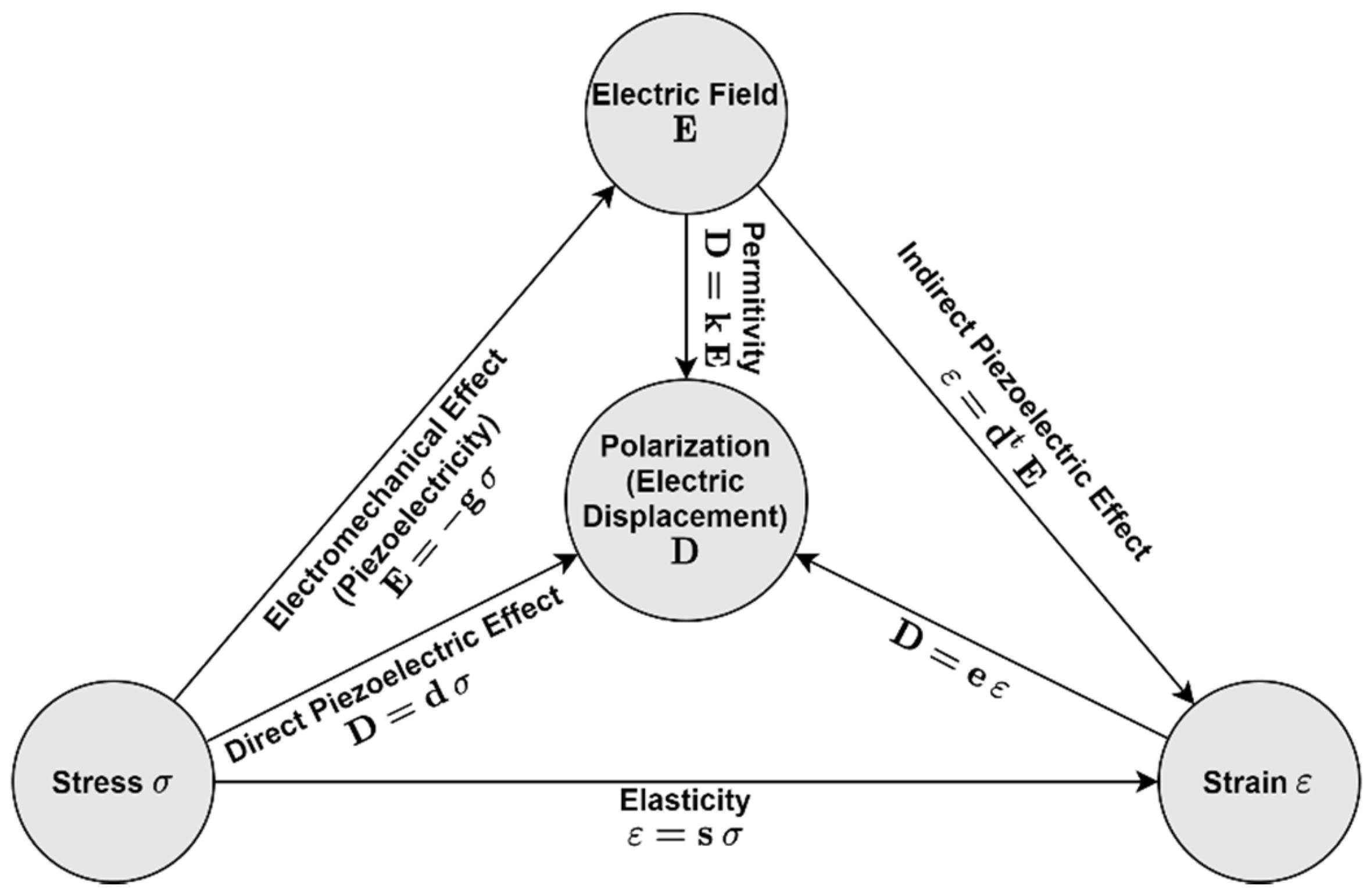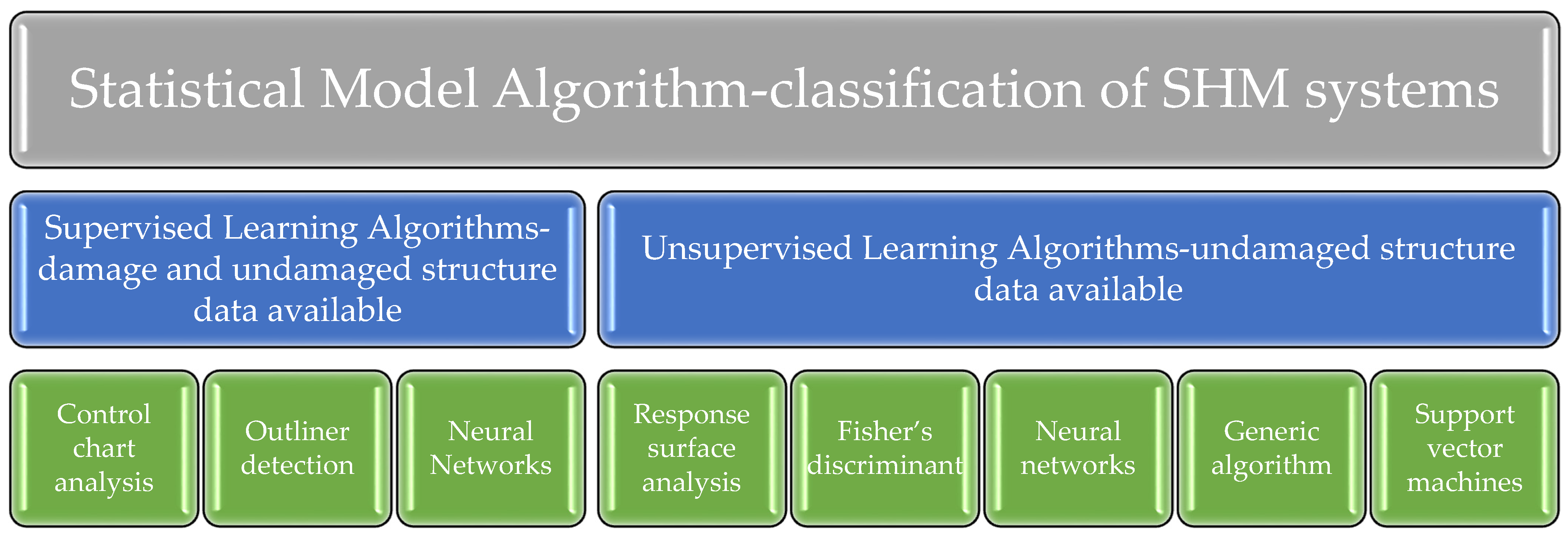Piezoelectric materials can be called“the top of the crop” of smart materials. Piezoelectric materials have emerged as the most researched materials for practical applications among the numerous smart materials. They owe it to a few main reasons, including low cost, high bandwidth of service, availability in a variety of formats, and ease of handling and execution. Several authors have used piezoelectric materials as sensors and actuators to effectively control structural vibrations, noise, and active control, as well as for structural health monitoring, over the last three decades. These studies cover a wide range of engineering disciplines, from vast space systems to aerospace, automotive, civil, and biomedical engineering.
- piezoelectric material
- vibration control
- noise control
- active control
- damage structure
- SHM
1. Introduction
 Figure 1. Effect of Piezoelectric material [5]. Reprinted under the Creative Commons (CC) License (CC BY 4.0).
Figure 1. Effect of Piezoelectric material [5]. Reprinted under the Creative Commons (CC) License (CC BY 4.0).2. Structural Health Monitoring
 Figure 2. Algorithms classification for Statistical Model Development for SHM.
Figure 2. Algorithms classification for Statistical Model Development for SHM.3. Conclusions
-
The procedure of control and repair used to preserve the structural integrity of damaged components is distinctive. It is established on the converse piezoelectric effect, in which the local moment and force induced in the piezoelectric materials by an applied electric field would make it easier for the structure to prevent the development of high stress and strain levels because of external load and thus lessens the criticality of the damage.
-
Structural health monitoring is also proving highly significant in avoiding the premature collapse of structures based on aerospace and civil industries such as offshore platforms, houses, bridges, and underground structures.
This entry is adapted from the peer-reviewed paper 10.3390/act10050101
References
- Dineva, P.; Gross, D.; Müller, R.; Rangelov, T. Dynamic Fracture of Piezoelectric Materials; Springer International Publishing: Cham, Switzerland, 2014; Volume 212.
- Holterman, J.; Groen, P. An Introduction to Piezoelectric Materials and Applications; Stichting Applied Piezo: Apeldoorn, The Netherlands, 2013; ISBN 978-9081936118.
- Curie, J.; Curie, P. Développement, par pression, de l’électricité polaire dans les cristaux hémièdres à faces inclinées. Comptes Rendus de l’Académie des Sciences 1880, 91, 294–295.
- Chee, C.Y.K.; Tong, L.; Steven, G.P. A review on the modelling of piezoelectric sensors and actuators incorporated in intelligent structures. J. Intell. Mater. Syst. Struct. 1998, 9, 3–19.
- De Jong, M.; Chen, W.; Geerlings, H.; Asta, M.; Persson, K.A. A database to enable discovery and design of piezoelectric materials. Sci. Data 2015, 2, 1–13.
- Qin, Q.H. Advanced Mechanics of Piezoelectricity; Springer-Verlag: Berlin/Heidelberg, Germany, 2013; Volume 9783642297, ISBN 9783642297670.
- Dahiya, A.; Thakur, O.P.; Juneja, J.K. Sensing and actuating applications of potassium sodium niobate: Use of potassium sodium niobate in sensor and actuator. Proc. Int. Conf. Sens. Technol. ICST 2013, 383–386.
- Samal, M.K.; Seshu, P.; Dutta, B.K. Modeling and application of piezoelectric materials in smart structures. Int. J. COMADEM 2007, 10, 30.
- Benjeddou, A. Shear-mode piezoceramic advanced materials and structures: A state of the art. Mech. Adv. Mater. Struct. 2007, 14, 263–275.
- Lang, S.B.; Muensit, S. Review of some lesser-known applications of piezoelectric and pyroelectric polymers. Appl. Phys. A Mater. Sci. Process. 2006, 85, 125–134.
- Kang, K.; Chun, H.; Lee, J.A.; Byun, J.; Um, M.; Lee, S. Damage Detection of Composite Plates Using Finite Element Analysis Based on Structural Health Monitoring. J. Mater. Sci. Eng. 2011, 1, 14–21.
- Ihn, J.; Chang, F. Pitch-catch Active Sensing Methods in Structural Health Monitoring for Aircraft Structures. Struct. Heal. Monit. 2008, 7, 5–15.
- Martinez-Luengo, M.; Kolios, A.; Wang, L. Structural health monitoring of offshore wind turbines: A review through the Statistical Pattern Recognition Paradigm. Renew. Sustain. Energy Rev. 2016, 64, 91–105.
- Güemes, A.; Fernandez-Lopez, A.; Pozo, A.R.; Sierra-Pérez, J. Structural health monitoring for advanced composite structures: A review. J. Compos. Sci. 2020, 4, 15.
- Miorelli, R.; Kulakovskyi, A.; Chapuis, B.; D’Almeida, O.; Mesnil, O. Supervised learning strategy for classification and regression tasks applied to aeronautical structural health monitoring problems. Ultrasonics 2021, 113, 106372.
